A thriving garden is more than just a place for greenery—it’s a living, breathing ecosystem that brings together beauty, biodiversity, and bounty. One of the most dynamic and space-efficient ways to elevate your home garden is by incorporating vining fruits. These natural climbers add vertical interest, cover unsightly areas, and most importantly, provide fresh, flavorful harvests.
While grapes and gourds are common choices, this article explores seven unique vining fruits that can truly transform your garden into a productive and visually stunning paradise.
1. Passion Fruit (Passiflora edulis)
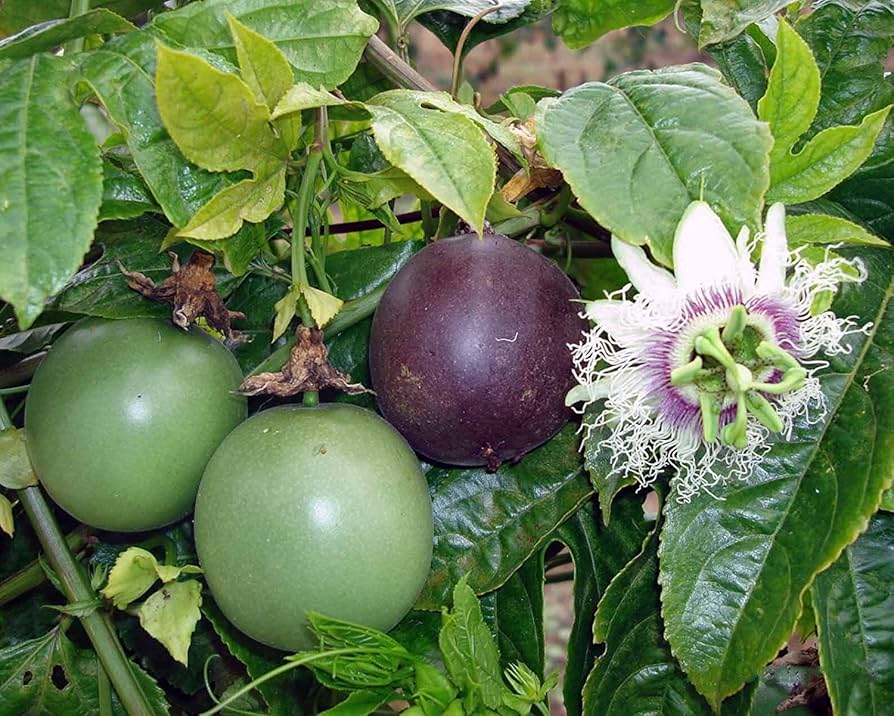
Origin: South America
Climate: Tropical to subtropical
Type: Evergreen perennial vine
Passion fruit is not just a treat for the taste buds—it’s a visual spectacle. With its exotic, fringed flowers and fragrant, round fruits, this vigorous climber adds a luxurious feel to any garden space. The fruit is usually purple or yellow when ripe and contains sweet-tart pulp that’s rich in vitamin C, fiber, and antioxidants.
The vine thrives in full sun, requires a strong trellis, and can grow up to 20 feet long. Passion fruit plants begin producing fruit within 12–18 months when grown in well-drained soil and warm temperatures.
Garden Use: Drape over an archway or trellis near the garden entrance for a show-stopping effect.
Bonus: The flowers attract bees and butterflies, enhancing pollination in your garden.
2. Chayote (Sechium edule)
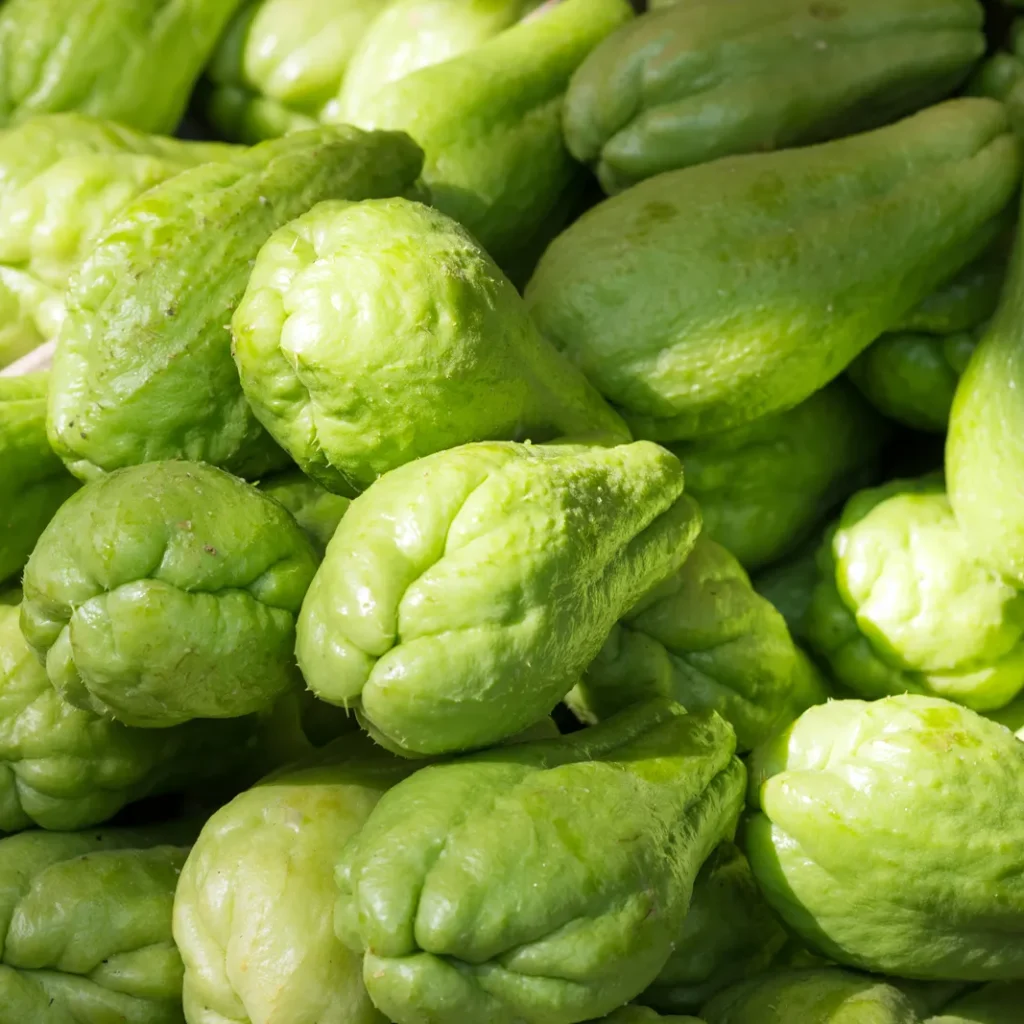
Origin: Central America
Climate: Warm, frost-free zones
Type: Fast-growing perennial vine
Also known as vegetable pear or “chow chow,” chayote is a unique vining fruit from the gourd family. Its pale green, pear-shaped fruits are used in a wide range of cuisines—boiled, stuffed, sautéed, or pickled.
Chayote vines can grow up to 30 feet in one season and require a solid support structure. They also produce edible shoots, roots, and young leaves, making it a highly versatile plant.
Garden Use: Grow it over a pergola or greenhouse roof to create a living canopy.
Bonus: One plant can yield over 50 fruits per season with minimal pest problems.
3. Cucamelon (Melothria scabra)
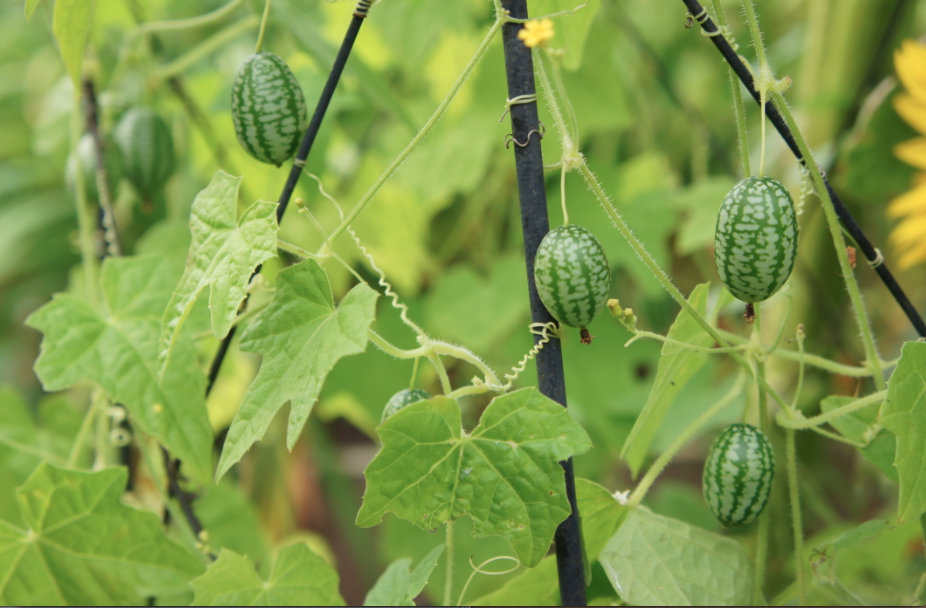
Origin: Mexico and Central America
Climate: Warm to hot climates
Type: Annual vine
Looking like a miniature watermelon and tasting like a tangy cucumber, cucamelons (also called mouse melons or Mexican sour gherkins) are as fun to grow as they are to eat. These tiny fruits, about the size of grapes, are perfect for pickling or adding a zesty crunch to salads.
The vine is compact, making it ideal for small spaces, container gardens, or balconies. It requires minimal maintenance and thrives in warm weather with consistent watering.
Garden Use: Let it climb up a tomato cage or vertical netting on a balcony.
Bonus: Virtually pest-free and kid-friendly, it’s perfect for beginners.
4. Hardy Kiwi (Actinidia arguta)
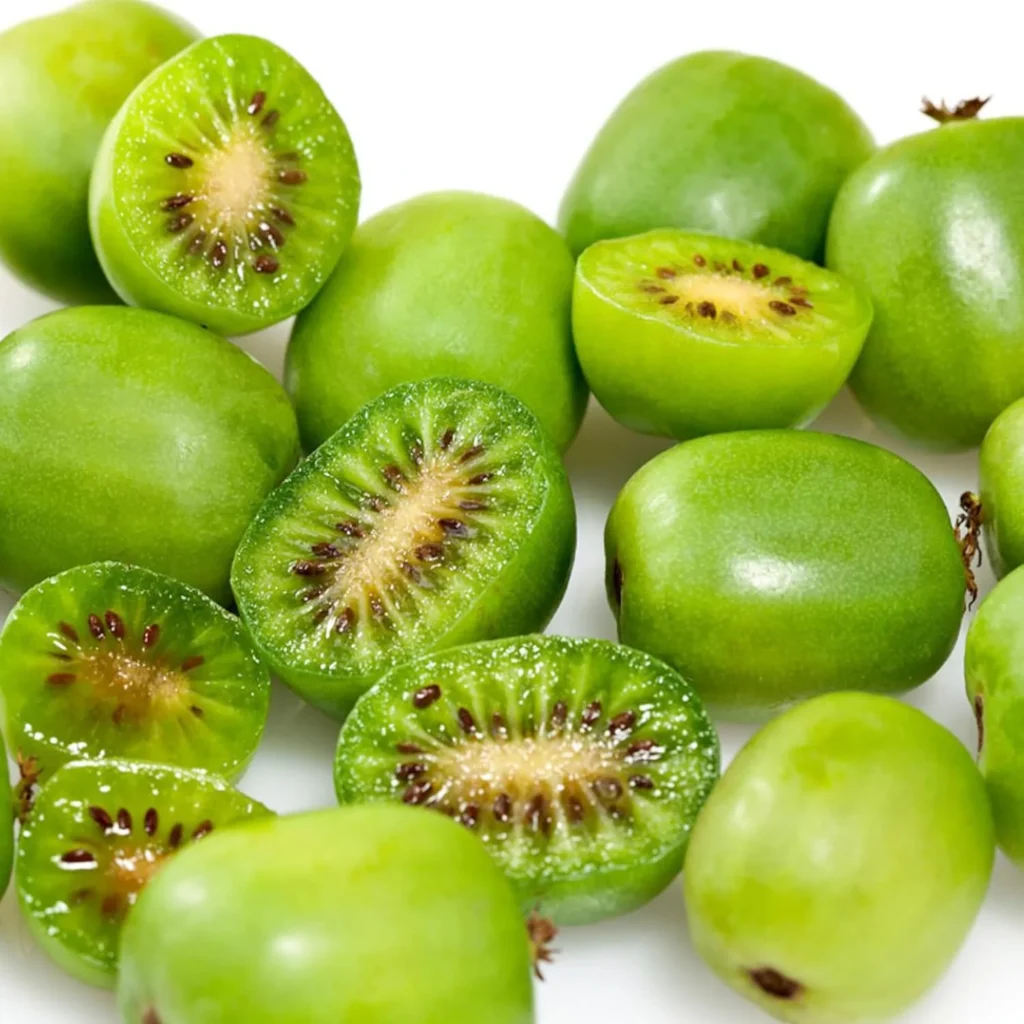
Origin: Eastern Asia
Climate: Temperate (can tolerate -25°C)
Type: Deciduous perennial vine
If you love kiwis but live in a cooler region, hardy kiwi is your best friend. Unlike the supermarket variety, this kiwi produces smaller, smooth-skinned fruits that you can pop into your mouth without peeling. The vine itself is robust and can grow over 20 feet annually under ideal conditions.
Hardy kiwis are dioecious, which means you’ll need both male and female plants for fruiting. They enjoy full sun, well-drained soil, and regular pruning to keep their growth in check.
Garden Use: Perfect for covering fences, trellises, or privacy walls.
Bonus: The fruits are rich in vitamin E, potassium, and dietary fiber.
5. Snake Gourd (Trichosanthes cucumerina)
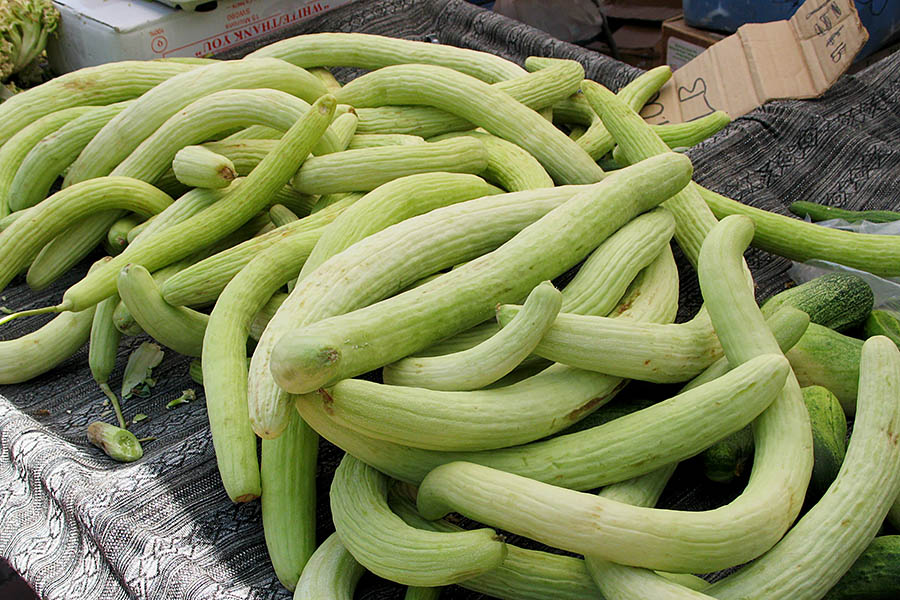
Origin: India and Southeast Asia
Climate: Warm and humid
Type: Annual vine
Snake gourd is one of the most fascinating vining fruits you can grow. As the name suggests, its fruits are long, slender, and curved like snakes, often growing several feet in length. It’s widely used in Indian, Thai, and Sri Lankan cuisine, offering a mildly bitter, refreshing taste.
The plant produces beautiful white flowers with lace-like edges that open in the evening, making it a great choice for moon gardens. It’s heat-tolerant and highly productive when given adequate sunlight and space to sprawl.
Garden Use: Train over a bamboo trellis or arched tunnel for a dramatic visual effect.
Bonus: The plant’s flowers and fruits are both edible and medicinal.
6. Akebia (Akebia quinata)
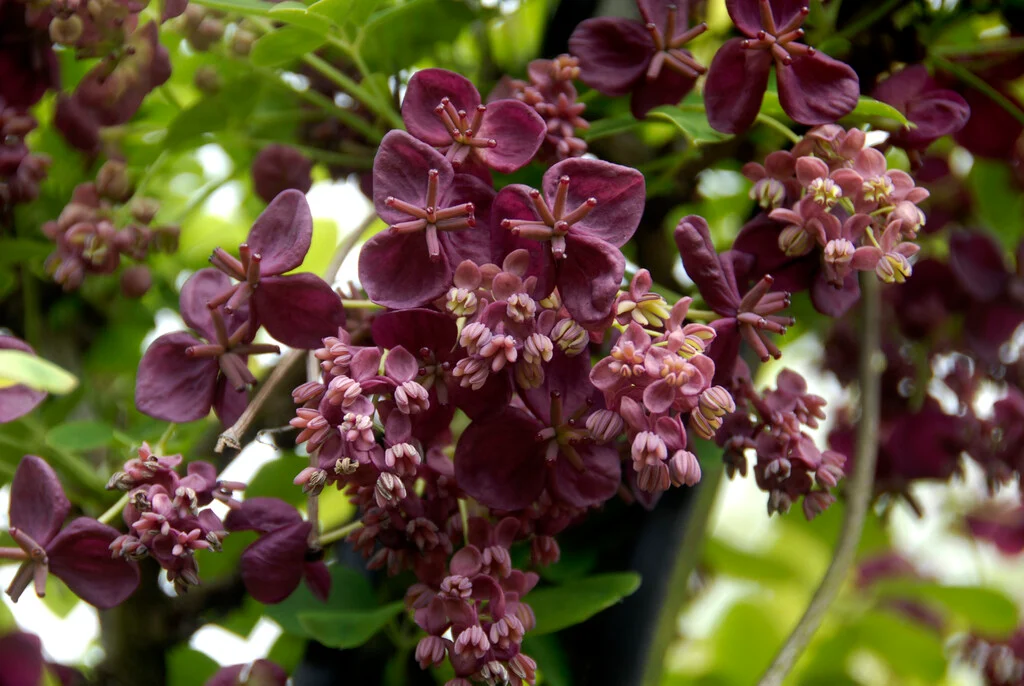
Origin: Japan, China, and Korea
Climate: Temperate
Type: Semi-evergreen vine
Akebia, or chocolate vine, is a lesser-known vining fruit that doubles as a beautiful ornamental. It produces unique purple or chocolate-scented flowers in spring, followed by sausage-shaped fruits that split open when ripe to reveal sweet, jelly-like pulp.
This vine is fast-growing and ideal for covering walls or trellises quickly. While the fruit may not be commercially popular, it offers a rare experience for adventurous gardeners and foodies.
Garden Use: A romantic, flowering vine for shaded walkways or wooden fences.
Bonus: The vine’s leaves and pods are edible and used in Japanese herbal remedies.
7. Dragon Fruit (Hylocereus undatus)
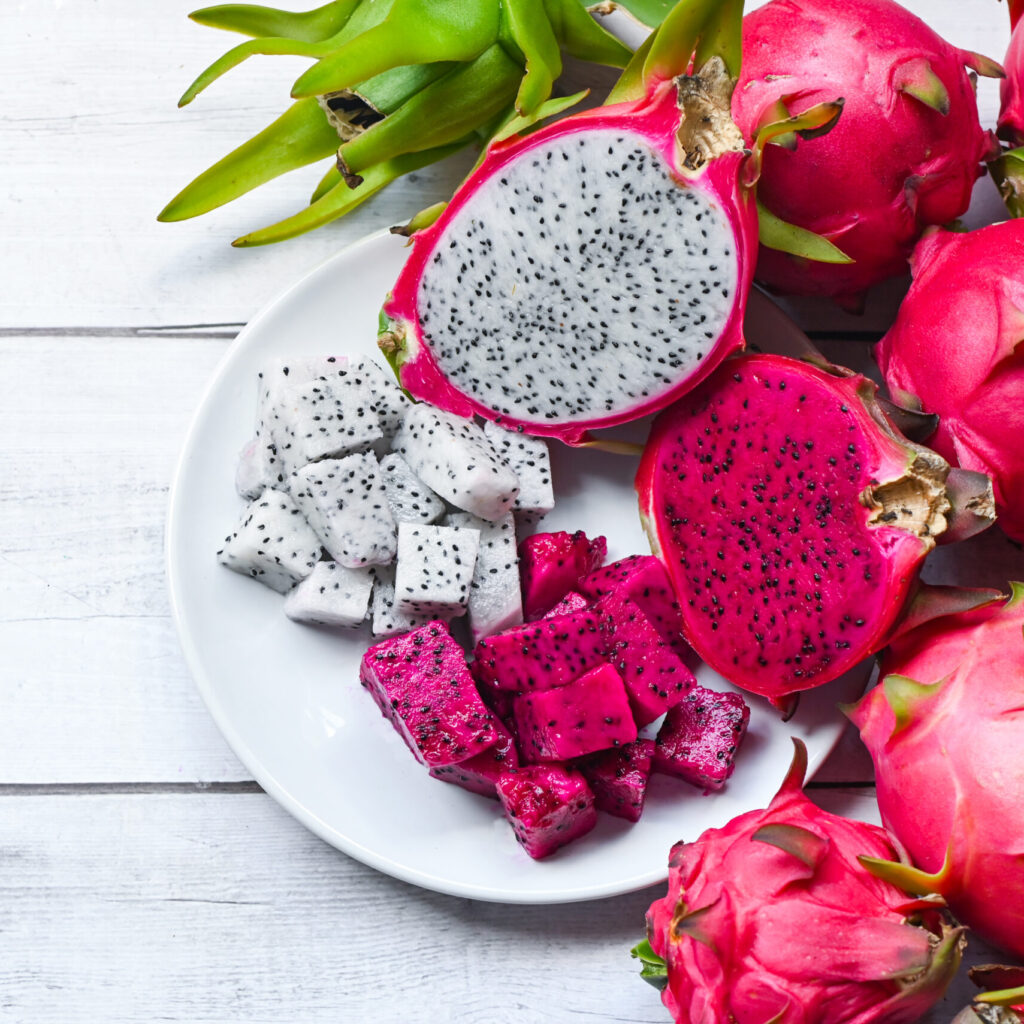
Origin: Central America
Climate: Tropical and subtropical
Type: Climbing cactus vine
For gardeners in warmer regions, dragon fruit is a showstopper. This climbing cactus produces large, exotic fruits with neon pink or yellow skin and sweet, seedy flesh. It’s not only delicious but packed with antioxidants, fiber, and vitamin C.
Dragon fruit blooms at night, revealing large white flowers that attract moths and bats. The plant requires full sun, well-drained sandy soil, and sturdy vertical support, often using concrete or wooden posts.
Garden Use: Grow it as a vertical feature plant near patios or in large containers.
Bonus: The cactus-like branches store water, making it drought-tolerant and low-maintenance.
Benefits of Vining Fruits in Your Garden
Incorporating vining fruits offers several unique advantages:
Space Maximization
Vertical growth frees up ground space for other crops, ideal for urban or small gardens.
Visual Appeal
These vines provide lush green walls, natural canopies, and seasonal color bursts.
Diverse Harvests
Many vines yield fruits over extended periods, ensuring continuous homegrown supply.
Pollinator-Friendly
The flowers of vining fruits attract bees, butterflies, and birds, enhancing the garden ecosystem.
Microclimate Creation
Vines grown over walls or pergolas can reduce heat, create shade, and improve air quality.
Essential Tips for Growing Vining Fruits
- Choose the Right Support: Invest in durable trellises, cages, or arbors suitable for your vine’s weight and growth pattern.
- Feed Regularly: Use organic compost or slow-release fertilizers for healthy growth and fruiting.
- Water Wisely: Keep soil consistently moist but well-drained—overwatering can rot roots.
- Prune When Necessary: Regular trimming promotes airflow, reduces disease risk, and encourages more fruit.
- Watch for Pests: Vines like passion fruit or chayote may attract aphids or mites. Use neem oil or organic sprays.
Final Thoughts
Vining fruits are more than just climbing plants—they are smart, space-efficient solutions for modern gardeners. Whether you want tropical flavors, medicinal benefits, or simply a lush garden that produces food and beauty simultaneously, these seven unique vining fruits offer something truly special.
From the exotic dragon fruit to the miniature cucamelon, each of these vines brings charm, character, and a burst of flavor to your backyard. So go ahead—plant upwards, and let your garden grow wild, vibrant, and fruitful.






Leave A Comment